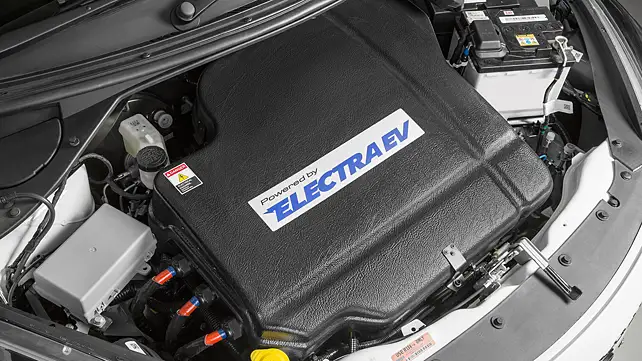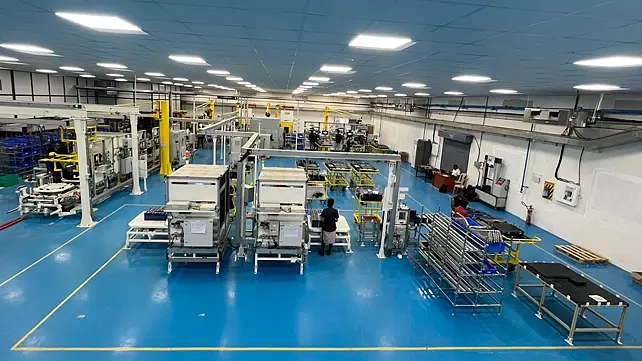
It was in November last year when GEF Capital Partners’ South Asia Growth Fund II announced an investment in the Ratan Tata-owned Electrodrive Powertrain Solutions, or Electra EV, for a minority stake.
For a young company aiming to “transform the global movement towards cleaner fuels”, the infusion of over $25 million (about INR 207 crore) provided a major stimulus in aiding its drive towards scaling up production at its Coimbatore facility as well as in ramping up its research and development capabilities in Pune and increasing reach and proximity with customers.
Samir Yajnik, Executive Director, Electra EV is content with the progress the company has made in its five-year-old journey but, just as the funding came in, felt it should have “gone for a little more”. The set roadmap would need more funds and he confirmed that the company was looking at a huge surge of needs.
“It of course depends on how things go, but we certainly don’t want to miss the wave. The opportunity is here and now. So we may look for a Round 2 soon,” said Yajnik. GEF Capital is an integral partner to Electra’s strategy and “actively involved” in building the long-term strategic aspects of the business.
Powertrain Solutions
The end-to-end powertrain solutions company has made a strong name for itself as the heart behind the successful launch and run of the Tata XPRES-T (fleet) and Tata Ace EV. With over 5,000 Tata XPRES-T vehicles in operation, it considers this a “super success” and is extremely proud of the fact that it hasn’t had a single thermal incident since launch.
As Electra EV adds to its engineering capabilities, the XPRES-T is also being regularly upgraded. With a 72 V architecture, the vehicle range has gone up from 140 km at the start to 213 km now. A third variant of the XPRES-T with a range of 315 km was also introduced in November last year.
This product has been tested for all new standards, including AIS-038 – a requirement on a vehicle’s electrical safety – and gets a high energy density, IP67-rated battery pack, and a 55 kW motor producing 170 Nm of torque. While various subsystems have “more or less remained the same”, the battery and cells have undergone changes, he said.

From an engineering and product standpoint, Electra EV has capabilities in the low- and mid-voltage range, right from a 48 V architecture that it pioneered with the electric Nano (branded as NEO) to a 72 V architecture for the XPRES-T (Tigor EV in the past) and the 96 V platform for the Tata Ace EV.
Major Milestone
In fact, in October last year, Electra EV crossed a major milestone in its journey. This was in getting its 72 V powertrain solution for the fleet segment to cross the 100,000 km benchmark in a significant number of BluSmart-run Tata Tigor Extended Range EVs, as well as in an increasing number of XPRES-T electric sedans.
Electra also has two versions of its high voltage solutions – a 350 V and 650 V for electric buses that is FAME 2-compliant. The 650 V architecture can be positioned for pickup and bigger trucks too.
The company had also built a 110 V solution which didn’t find many takers but, depending on how demand moves, it can be introduced.
For the 350 V solution, it is in talks with potential customers in the UAE, said Sumeet Dhar, Chief Operating Officer, Electra EV.
Even as the industry seems to be warming up to higher voltage solutions, he said there would be place for both. The average speed on Indian roads is about 40-45 kmph unlike the West, where it is in the range of 80-90 kmph. “When you need that level of high speed and high accelerating powertrains, the 350 V architecture can certainly come into play,” Dhar argued.
Future Opportunities
Between its India and overseas aspirations, Electra EV is looking to expand its offerings in the mass market on one side, and to SUVs on the other. The SUV, Yajnik said, was a bit experimental – it’s going to be very low volume to start with, but in about 15-odd months from now, he expects to launch a product outside India.
“In the orthogonal plane, we’re going to tractors”, he said while referring to an agro-based product for an Indian OEM that he refused to name. Although an Indian project, the customer might want to export it, he added.
Beyond these, the company is exploring new technology areas and may either collaborate with partners or look at other inorganic ways to acquire these technologies. Dhar said the company spent considerable time trying to understand its strengths and weaknesses over the last five years, and juxtaposed it on “what the market needs are, where our aspirations are going to be in the near-, mid- and long-term”.
As part of that strategy, and to not just organically but inorganically catapult its capabilities to the next level, Electra EV is exploring partnerships with potential companies and academic institutions like IIT Madras and IIT Delhi (it is already running projects with them). Further on the cards is either acquisition of specific capabilities of start-ups, or (acquisitions) of complete start-ups, Dhar said.
More Inorganic
Even while being pressed for more details on Electra’s plans, he had this to say: “Organic has its own timescale, which the industry might not be able to offer us. There’s only a limited window of opportunity when you can get established and then kind of start to fly. I think it’s going to be more inorganic than organic.”

Earlier, Electra EV had entered into a collaboration with Continental on permanent motors, one that fell through midway. Yajnik reasoned that the team learnt about permanent magnets and how it can use them in its powertrain. “We are talking to at least three companies providing motors to bring some high end solutions to the market, even as we continue to work with our existing provider,” he said.
Electra EV continues to work with Kirloskar Electric Company (KEC) for both its versions and is scaling that business. The company is also exploring non-magnet based motor providers, including that for Switch Reluctance Motors (SRM). These are essentially R&D projects, Yajnik said, and are not bound by definite timelines.
Critical Steps
Nonetheless, these are important steps considering India, and the industry per se, needs to reduce its dependency on magnet-based solutions. Permanent magnet motors are used in over 90% of EVs, largely due to their power density and efficiency. These aren’t sustainable though, considering that these motors are made with rare earth (RE) elements such as Neodymium, Terbium, and Dysprosium.
For motors, the initial thought was to pursue a joint venture, but having co-created the design, Electra EV decided to have it manufactured by somebody locally. And that strategy is likely to continue. Meanwhile, the company has developed its own Vehicle Control Unit (VCU) and Battery Management System (BMS). The microcontrollers continue to be imported from the US.
“We need to continue to work on three things – cost optimisation, energy optimisation and delivering a safe product,” Yajnik said. The general strategy is to have the “software, the brain power and the heart power” as Electra’s own IP, while everything that’s physically made can be contract manufactured.
Building In-house Capabilities
Building capabilities in-house has been top priority for Electra EV right from the time it was conceived. That’s going to be the critical piece of the puzzle, said Dhar, because “just manufacturing something designed externally elsewhere will end up making us a third party manufacturer. There’s no value add in that.” He advocated in-house designing, testing and manufacturing, with the quality levels that guarantee a satisfied customer.
Part of the GEF investment will go into revamping Electra’s existing R&D set-up, as well as doing a prototyping facility in Pune. Over the next six-odd months, the company intends to have a “completely revamped” R&D facility ready.
In Conclusion
When this writer had met Yajnik in 2020, he was looking to build Electra EV into a $100 mn company over the next two to three years. A few months down the line, the pandemic hit the world, and things went awry for the entire sector. Even then, Electra EV continued to grow its business.
“We probably would have done four-and-a-half fold increase from last year, which of course from the previous year – which was a pandemic year – was a three-fold increase. So it went from INR 35 crore to INR 105 crore to probably four times more now,” explained Yajnik.
Clearly, that is a strong growth trajectory for a five-year-old brand. Electra EV’s vision of becoming the most energy efficient, frugal yet powerful EV powertrain company, at least for four-wheelers in India and globally, is firmly on track.
The good thing is, there are very few pure play powertrain companies in the market, and Yajnik, Dhar and others at Electra EV aren’t leaving any stones unturned to make founder Ratan Tata’s vision of making Electra EV a “specialist organisation”, a reality.
The road to maturity, however, is still far away, admitted Yajnik. “We’re probably two out of five currently, but there’s tremendous opportunity for growth. And there’s much to learn to be a global player,” he concluded.
Also Read:
Tata Tigor EV Gets 4 Star In GNCAP Car Crash Test